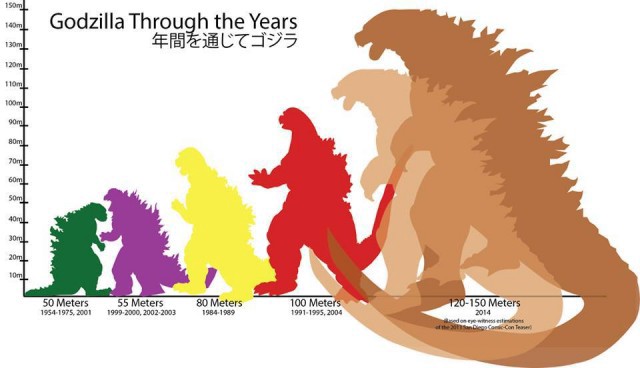How New York City Would Officially Respond to a Godzilla Attack
by Brendan O’Connor
https://giphy.com/gifs/rXjRToAXZMjEk
Godzilla is traditionally understood to be a denizen of the Pacific Ocean, attacking coastal cities from eastern Asia to western North America. That did not stop me from worrying, as a five-year-old growing up in Manasquan, New Jersey — a beach town — about what might happen if Godzilla emerged one day from the Atlantic Ocean. But even then, I had no illusions about my heroism: I would not stop Godzilla through some ingenious act of immense violence or by coercing some other, slightly more friendly kaiju to fight Godzilla on humanity’s behalf. No, I knew that I would be one of the tens (hundreds?) of thousands of human insects scurrying away from the giant lizard’s thundering feet.
In the event that Godzilla was awoken from its slumber in the Pacific and made its way around Cape Horn and then back up the coast of two continents — or, more likely, that it cut a path of destruction through the Panama Canal, then slipped back beneath the waves as it made its horrible path towards North America, having completely disrupted the global economy — New York City residents are fortunate that the New York Harbor is (relatively) shallow. The natural depth of the harbor, according to Kate Ascher, author of The Works: Anatomy of a City is 17 feet — although, over the course of the past century, it has been dredged to a depth of around 50 feet. In other words, the 2014 Godzilla, as massive as it is, would not be able to approach New York City undetected either by the National Oceanic and Atmospheric Administration — the NOAA’s system of buoys would be particularly useful — or by citizens reporting odd activity in the harbor. (“If you would like to report an observation of hazardous winds…waves or weather on the waters or if you find our marine forecast is un-representative of conditions on the local waters…please contact us,” the NOAA says.)

“If there’s a big lizard coming, we’ll get some advance notice,” Commissioner Joseph F. Bruno of New York City’s Office of Emergency Management, the coordinating agency in a massive disaster, like an attack by Godzilla, told me. “How big is this guy?” asked the commissioner when I spoke to him over the phone. “He’s big,” Bruno said, answering his own question. “He would cause fire and explosions. Casualties. Damage. Debris.” Helpfully, the nerds over at io9 dug up this chart illustrating Godzilla’s growth over time; the 2014 Godzilla, thanks to inflation, is around 150 meters tall. “And, you know, he probably would put a whole load of slime all over our streets, which we’d need to be concerned about as well,” Bruno said. Dr. Craig McClain of Deep Sea News estimates that the current iteration of Godzilla would produce 12,921,400 gallons of urine per day, or about a quarter of the hold of the largest production oil tankers.
A sighting of the creature approaching New York through the harbor would trigger the OEM’s Area Evacuation Plan for lower Manhattan, Bruno told me, which would move and hold 600,000 people in the 65 evacuation centers and 509 shelters that the OEM owns or has access to throughout NYC, which includes buildings owned by the public school system and CUNY. (“We’d close the schools, obviously,” Bruno said.)
“Everything that occurs comes through the EOC,” Bruno said, referring to the Emergency Operations Center, a kind of command post that OEM opens up to facilitate communication between all of the different organizations — local, city, and state governments, along with utility companies, and even some not-for-profits — that are involved in dealing with things like Godzilla. “Up to maybe 140 agencies,” Bruno said. “We would put the entire government on alert, dealing with the threat and then a portion of the government dealing with the consequences of it and the protection of people.”
Bruno says the OEM would ask the federal government to get involved almost immediately, making it easier to coordinate with the inevitable military response. “They’re already here, to some extent,” said Bruno, referring to Air Force’s McGuire-Dix-Lakehurst joint base, just 75 miles away. “Obviously we’d have a military command out in the field where the thing is coming ashore, but we would supply logistic support, assets that might be required for a battle,” the commissioner said. “We’d bring them in along with a very robust police department that we have.”
“How long could this lizard survive with the amount of resources we would be bringing in to support us?” Bruno wondered. Neither of us knew, but in the trailer, Ken Watanabe says that “The arrogance of man is thinking nature is in our control and not the other way around,” so, like, be careful, I guess?
Brendan O’Connor enrolled in Notify NYC during the reporting of this story and also will definitely be going to see Godzilla on Friday.
